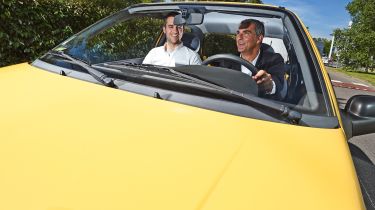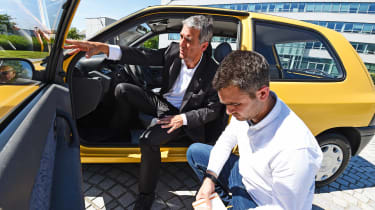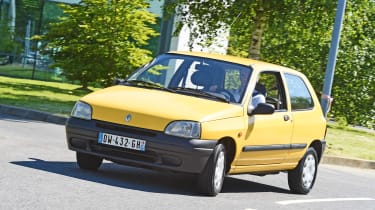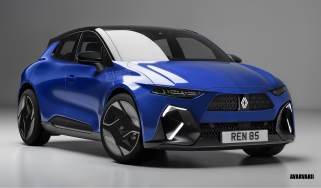Renault Clio: secrets of how the brand was born
Thierry Plantegenest, the original Renault Clio product chief, reveals the secrets behind its launch and tells us why it’s an icon
The Renault Clio is an icon. But when the supermini was unveiled at the Paris Motor Show in 1990, it had some very big shoes to fill; after all, this was the successor to the legendary Renault 5 (affectionately known as the supercinq in Mk2 guise). However, the Clio went on to become a sales hit in the UK, following a memorable series of expertly executed ‘Papa & Nicole’ TV adverts only one year later.
The man responsible for the Clio’s initial triumph was product manager Thierry Plantegenest. He works at Renault to this day, and is now sales and marketing vice president for the brand’s LCV and pick-up division.
To get an idea of the scale of Plantegenest’s challenge, we caught up with him at Renault HQ in Paris. We sat next to him in a beautifully kept first-generation Clio as he talked us through his story from conception to implementation.
• The Renault Clio's best special edition cars
Surely something as cute as this original car was destined for great things right from the off? “I had two roles,” Plantegenest tells us. “To launch the car, and manage the lifecycle. I had to launch the car in a non-digital world – using TV, radio and magazines. There was no Internet. I had to replace a blockbuster and make it more profitable, while also improving customer satisfaction.
“I also had to develop conquest sales on women and young people. Peugeot was doing the job with the 205, and Citroen with the AX. I had to make the Clio more global.”
Not a straightforward product launch, then. With so much riding on the new car, it fell almost entirely on Plantegenest’s shoulders to deliver the goods – not only in France, but also in the UK, Europe and further afield.
• Best superminis on sale right now
He launched several region-specific marketing campaigns, including those for France, Russia and the Middle East, but it was the iconic Papa & Nicole sequence that worked so well this side of the Channel. “Nicole was better known than the British Prime Minister,” he says. “So it worked really well. The [Papa & Nicole] saga ran for more than three years. It was something very special.”
But a fruitful launch is only temporary. Plantegenest’s role also included the successful management of the original Clio’s eight-year lifecycle. His proposal included various special editions, many of which focused on women and younger buyers – a target made clear from the outset.
No Renault line-up would be complete without a range-topping hot hatch, though, and the original Clio was no exception. “After the special editions, we tackled the sporty issues,” Plantegenest tells us. “We needed a range with more power. The first model was the Clio S, then we built the Clio RSi, and finally the Clio Williams.
“During this period we were number one in Formula One. The boss was Frank Williams, and we built the car with the inspiration from the team.” But Plantegenest’s involvement with the Clio Williams ran more than skin deep. It was he who initially asked Sir Frank if Renault could use the Williams name, while the standout gold wheels were Plantegenest’s choice, too.
“When we made the decision, I was the youngest person in the meeting,” he recalls. “The leader of design asked me to choose silver or gold. ‘The only one who can decide is Thierry, as he is the youngest,’ he said. I wanted gold. It was important to have the look. It was easy to recognise.”
Even all these years later, the achievements of the Clio Williams can be traced back to that judgement, with the iconic formula of blue on gold still distinguishable. It’s that car which influenced the brilliant Clio 172, and today’s RS.
“We had to replace the Renault 5 Turbo, and that was the answer,” Plantegenest explains. “Putting 150bhp and a 2.0-litre engine into a Clio wasn’t easy, but the engineers had more fun on the Clio Williams than on any other model. It was a huge success.”
So you’d think this was Plantegenest’s favourite? Wrong. That title goes to its predecessor, the Clio S, with its 79bhp 1.4-litre engine, five-speed manual box and 10.9-second 0-62mph time. “The Williams was easy. The Clio S was my energy,” he recalls. “We had to convince the engineers to invest in the 1.4-litre engine. The Williams was expensive. The S was the car for me.”
• Old vs new: the Renault Clio through four generations
But is what the Clio stood for back in 1991 the same as what it represents 25 years later? The original model’s selling points of comfort and equipment are still present and correct, but Plantegenest says the main differences come in customer satisfaction. “We needed an answer for the buyer who wanted a lot of equipment for a reasonable price,” Plantegenest tells us. “That was the strategy across the world. It was very new.
“We still have the same customers, but that’s because the product quality has improved a lot. We have people who are on their first, second, third, fourth or even fifth Clio. The car is a good solution, and we have improved customer satisfaction through its quality.”
Through all four generations, the Clio has helped improve brand perception and take Renault to new heights. Manufacturing has taken a step up in quality, and dealers have learned the art of putting the customer first. It sits alongside the Volkswagen Golf as one of only two models to have won the coveted European Car of the Year trophy twice, and continues to feature in small-car sales charts across the globe.
The story may have started 25 years ago, but it’s far from finished. Now in its fourth generation, the Clio is facing tougher and more accomplished competition from not only Europe, but also Japan and Korea. The market is changing, but if anyone knows how to build, launch and develop a city-centric small car with grown-up manners, it’s Renault.
Did you ever own an original Renault Clio? Let us know in the comments section below...
Renault Clio Special
We celebrate a quarter of a century of Renault's supermini with real va-va-voom...
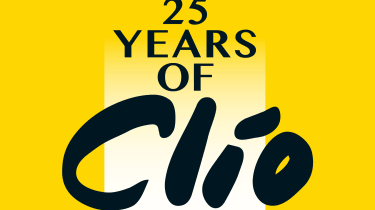
- • Win a Renault Clio for 6 months
- • Renault Clio: secrets of how the brand was born
- • Exploring the Mk4 Clio with the man who designed it
- • The Renault Clio's best special editions
- • Renault Clio tech innovations
- • Old vs new: the Renault Clio through four generations
- • History of the Renaultsport Clio
- • Renault EOLAB: the future of Renault
Find a car with the experts

